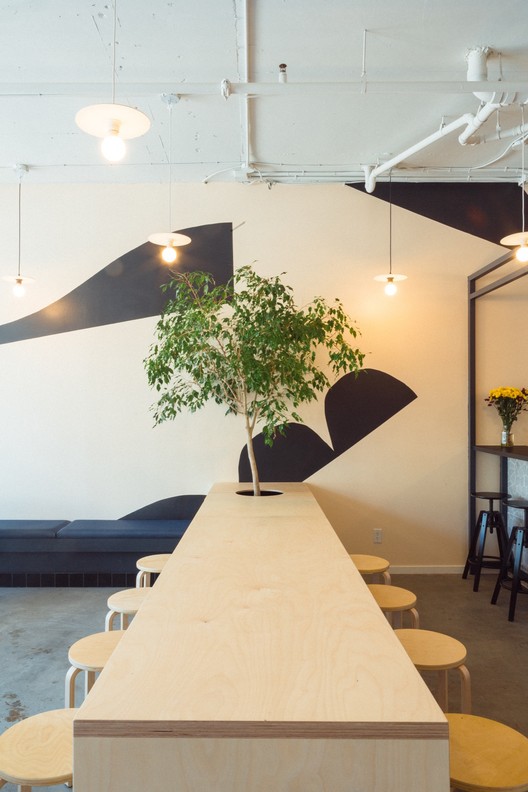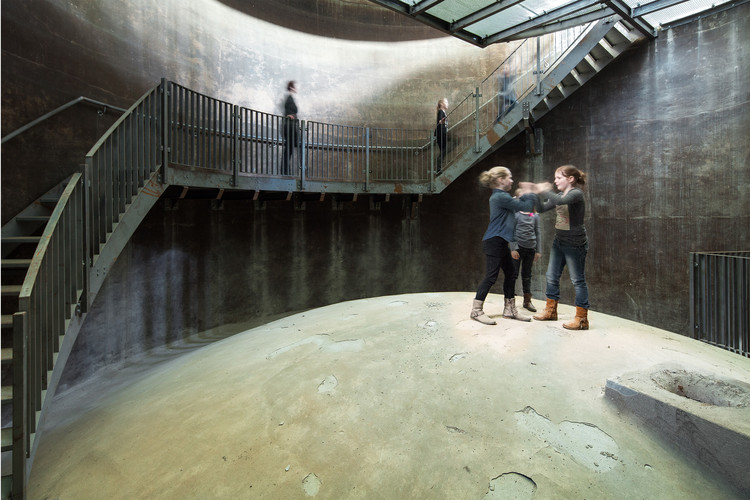Recovery of the former slaughterhouse into University campus Studio Insula
2013-04-30 01:00
© Stefano Cerio
C.Stefano Cerio


在过去的十年里,罗马的Testaccio区已成为一个关于城市转型的讲习班。作为一个有意义的城市发展战略区域,它对城市的文化和建筑提出了一个具有挑战性的反思问题,尤其是在复杂的后工业城市模式中,需要恢复和重新整合的区域和空间的存在。
Over the last ten years The Testaccio district in Rome has become a workshop on urban transformations. As it is a significative strategic area for urban development, it places a challenging matter of reflection about culture and architecture of the city, especially because of the existence of areas and spaces that need to be recovered and reintegrated in the complex new post- industrial urban mode.
© Insula srl
[医]岛


前屠宰场建于1880年至1890年,是在建筑师兼工程师乔阿奇诺·埃索克的设计下建造的,当时它是同类最先进的屠宰场之一。展馆展示了一个简单的建筑系统:长方形的平面体积,砖和凝灰岩结构,有规则的开口,倾斜的屋顶覆盖物由“Polonceau”铁桁架支撑。
The ex slaughterhouse was built between 1880 and 1890 following the project of the architect and engineer Gioacchino Ersoch ; at that time it was one of the most advanced of its kind. The pavilions show a simple building system : rectangular shaped plan volumes, bricks and tuff structure with regular openings ,pitched roof coverings supported by "Polonceau" iron trusses.


被认为是19世纪罗马土木工程工业考古学最好的例子之一,在七十年代,它被驳回,从那时起,为了新的临时用途,它被不同的翻新。目前,该地区的财产由市政府和罗姆人3大学共同拥有。
Considered one of the best examples of industrial archaeology in Rome of 19th century civil engineering, in the seventies it was dismissed, going since then under different refurbishments for new temporary uses. Nowadays the property of the area is shared between the Municipality and the Roma 3 University.
© Stefano Cerio
C.Stefano Cerio


鉴于19世纪早期存在的极其微妙的主题和明显的罗马考古学,底土总是丰富的,2001年至2013年间,岛叶工作室协调了整个建筑群的重新划分,并对一个大学校园进行了恢复干预,实现了整个地区和展馆的可行性研究和方案设计。
Campus Given the extremely delicate theme of 19th century pre-existences and obviously roman archaeology whereof the subsoil is always rich, between 2001 and 2013 Insula studio coordinated the requalification of the entire complex, and also the recovery intervention into a University campus, realizing the feasibility study and the scheme design of the whole area and the pavilions.
该项目被认为是干预和保护之间的微妙平衡,采取不同的办法:从修复和保存到增加内部表面,以及拆除最近的展馆。
The project has be conceived as a delicate balance between intervention and preservation, following different approaches: from restoration and preservation to the increase of internal surfaces, along with the demolition of the recent pavilions .
© Stefano Cerio
C.Stefano Cerio


第一次干预是关于6号展馆(厕所和动力室)和7号展馆:一个巨大的遮蔽大厅(85x15x10米),顶部有四个大天窗。该项目的目标是实现三个车间教室和260个座位礼堂。建筑师们选择了提升工业建筑的体积,并通过插入三层钢结构隔墙来创造隔音隔离的空间:横隔膜部分透明、线状、轻盈,通过选择基本材料(钢、木材、玻璃)和颜色(蓝色、白色和灰色)来实现。
The first intervention regarded Pavilion 6 (toilets and powerhouse) and Pavilion 7: a great covered hall (85x15x10 meters) with four big skylights on top. The project goal was to realize three workshop classrooms and a 260 seats auditorium. The architects have chosen to exalt the industrial volume, and create separate spaces also acoustically isolated- trough the insertion of three steel-structure partition walls: transversal diaphragm partially transparent, linear, light, realized by a choice of essential materials (steel, wood, glass) and colours (blue, white and grey).
巨大的几何足底和长悬挂的墙面表重新建立了人类的规模,并强调了这个地方的教学用途。
Big geometrical podiums and long suspended wall tables re-establish the human scale and underline the didactic use of the place.
© Stefano Cerio
C.Stefano Cerio


展馆2B项目(刚刚完成-2013年)预见到了大楼的恢复,以保证教室和车间的灵活位置,以及作为建筑学校和图书馆之间的一种连接的集体空间。与上一次干预一样,岛叶决定通过移动隔断保持体积,并清晰地显示出840平方米的大内部空间,追踪7座马厩(1932年拆除)中的最初分区。在桁架之间放置了六堵墙,显示出一个稳定的部分(玻璃和钢)和一个中央不透明部分(长9米,高3米),由折叠面板系统制成,便于移动,根据需要(从120平方米到729平方米)创造不同大小的环境。
The project of Pavilion 2B (just finished -2013) foresaw the recovery of the building to guarantee flexible locations for classes and workshops, together with a collective space as a link between the architecture school and the library. As in the previous intervention, Insula decided to preserve the volume and articulate the large internal space -840 square meters- through mobile partitions, tracing the original division in 7 stables (demolished in 1932). Six walls are placed between the trusses, and show a stable part (glass and steel) and a central opaque part (long 9 and high 3 meters) made by a folding panel system easy to move for creating different size ambiences, depending on the needs (from 120 to 729 square meters)
Master Plan


此次干预的目的是为了恢复和保存埃索克项目的剩余部分:以及外部,在那里,外观和装饰品在语言上得到了修复。
The intervention was carefully aimed to restore and preserve what is left of the original Ersoch project: as well as on the outside, where the façades and the decorations have been philologically restored.
.jpg)

.jpg)

.jpg)





.jpg)





























Architects Studio Insula
Location Rome, Italy
Category Renovation
Designer Architects Eugenio Cipollone, Francesco Cellini , Roberto Lorenzotti (Pavilions 6 & 7), Eugenio Cipollone, Paolo Orsini, Roberto Lorenzotti (Pavilion 2B)
Design Team Nicoletta Marzetti, Renzo Candidi, Lusilla Voci, Fabrizio Bonatti (Pavilion 2B)
Project Year 2013
Photographs Insula srl, Stefano Cerio
























